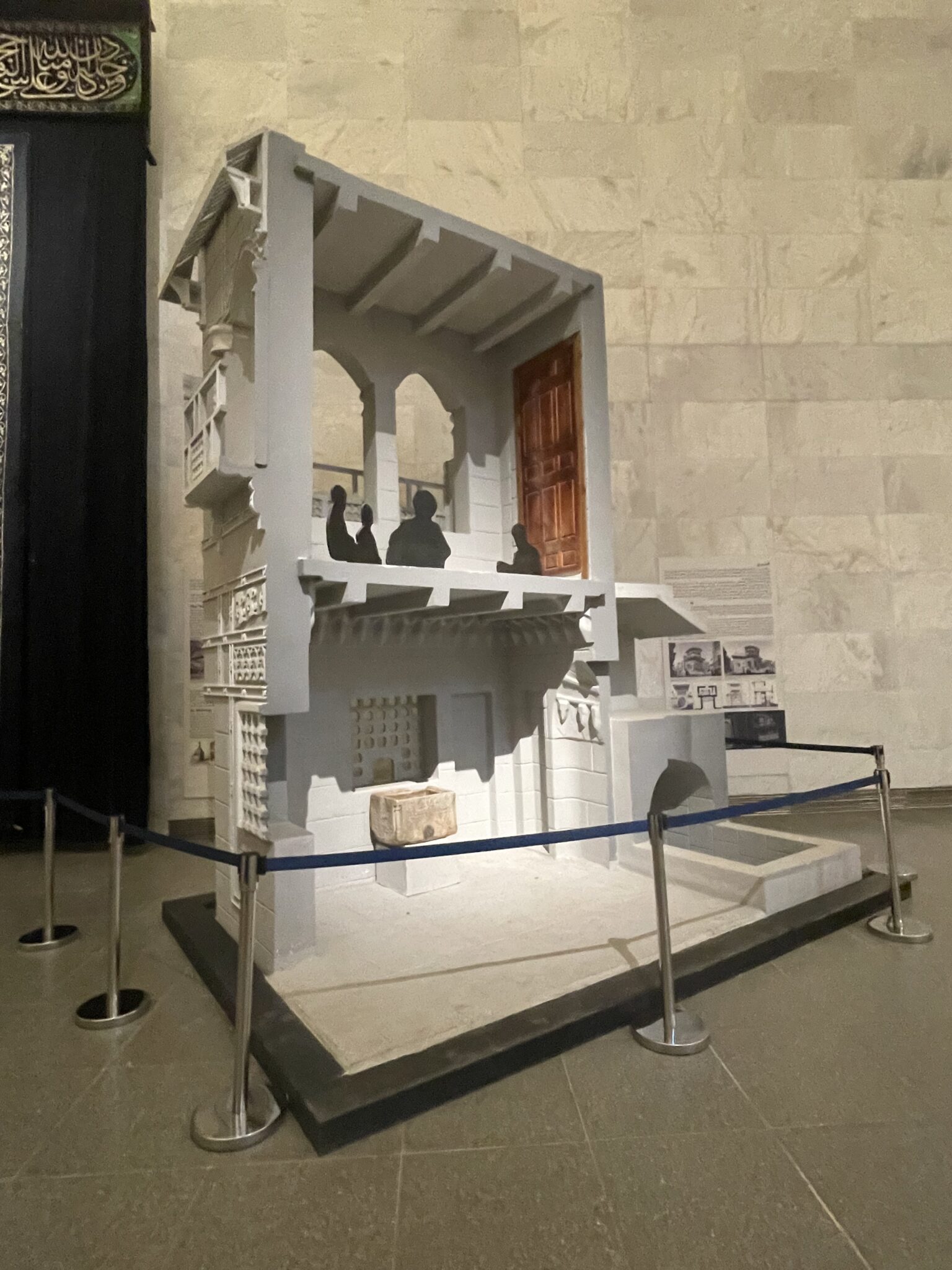Our journey begins on the evening of Thursday, March 17, with a direct flight to Cairo. Upon landing at the Cairo International Airport, I am met by The Mashrabiya Project‘s on-the-ground coordinator, Ahmed Abdelazim (more about Ahmed, including his own insights on Islamic architecture in Cairo, soon!). This is my first in-person meeting with Ahmed, even though we have been discussing the project for a year already through Zoom and emailing.
The Cairo House hotel is located in bustling Downtown Cairo, a central site for traveling throughout the city. On Friday morning, Ahmed arrives and we discuss the plans for the week over cappuccino and orange juice at a conveniently located café named Eish + Malh (Bread + Salt, which in Arabic tradition refers to a coming together over food to cement an agreement or alliance. Auspicious!). We head over to his car, parked on the roof of an enormous parking garage near to the Ibrahim Pasha Square, which witnesses countless lanes of traffic coming together in endless cacophony of horns, hand signals, and motors of all horsepowers gunning and sputtering.
Traffic at Ibrahim Pasha Square, Cairo
Our first stop is at the National Museum of Egyptian Civilization in al-Fustat, Cairo, the first Islamic capital city of Egypt. Al-Fustat is also the center for ceramic production in Cairo, as well as other heritage craft, and organizations like the Jameel House of Traditional Arts and the Al-Fustat Pottery Village offer a range of educational programs–from introductory workshops to post-graduate degrees. The NMEC was founded in 1982 with help from UNESCO and holds, in its collection, many examples of Egyptian workmanship, dating from the Pre-Dynastic and Ancient eras, through the Islamic periods to the present. It also displays the mummies and sarcophagi of many early kings and queens in its Royal Mummies Hall.
The main gallery, however, is given to craft and material culture throughout the civilizations who inhabited this land over thousands of years. The 1,000-square-meter exhibition space holds a display of objects, artworks, and architecture, including jewelry, ceramics, glass, metalwork, and of course woodworking–from mashrabiya to furniture, sarcophagi, and carved devotional sculpture.

Head of Hathor, the goddess of nurturing and motherhood; carved and painted wood. New Kingdom, 18th Dynasty (1550-1295 BCE), Valley of the Kings, Thebes

Wood funerary furniture and objects from the tomb of Sennedjem, New Kingdom, 19th Dynasty (1295-1186 BCE), Deir el-Medina, Thebes

Full-scale model of a madrasa (school for Islamic law and religious jurisprudence) with mashrabiya detail
I enjoyed the clever methods used to demonstrate architecture from the ancient to the present, including a full-scale madrasa (school for the study and interpretation of Islamic law) and a chronology of small-scale models detailing key sites in Islamic architecture concluding with Egypt’s Modernist architect, Hassan Fathy.
Islamic Architecture, a chronology
Finally–here’s what we came to see: a fine example of wood-turned mashrabiya with grand proportions. This would have graced the façade of an Ottoman-era building; its small turnings provide ventilation to the interior spaces, while also offering privacy to the building’s inhabitants. The use of the material of wood was practical as well as decorative; wood expands and contracts in climatic fluctuation. Notably, the lack of glues or fasteners in these interlocking screens allowed the wood structures to survive hundreds of years in harsh conditions.

Restored mashrabiya façade of wood-turned components, Ottoman era, Cairo, Egypt

Detail of wood-turned mashrabiya façade

Ahmed and Navva celebrating their first sighting of a museum-restored mashrabiya at the National Museum of Egyptian Civilization.
After all this, we are famished! Time to head back into town to find some nourishing comfort food.
Ma es-salaama!